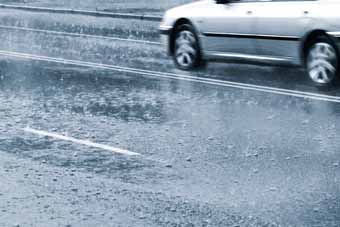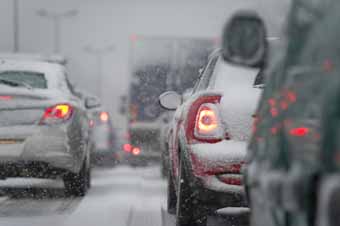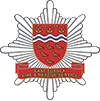Before winter weather arrives, check that your vehicle

- is properly maintained and serviced.
- tyres have plenty of tread depth, are in good condition and correctly inflated (don't forget the spare)
- radiator contains anti-freeze and the cooling system is free from leaks.
- battery is in good condition (many garages/battery suppliers will carry out this check free of charge).
- windscreen wipers and washers are working effectively.
- washer bottles are full and contain anti-freezing/cleaning additive.
Winter Driving Tips

- use dipped headlights in poor visibility
- reduce your speed compared to 'normal' driving conditions
- keep a safe stopping distance behind the vehicle in front. It takes much longer to stop in wet or icy conditions
- avoid harsh braking, acceleration and steering
- keep a careful watch out for other road users especially motorcyclists, pedal cyclists and young pedestrians
- if you get into trouble, try not to abandon your vehicle, stay with it until help arrives
- if you are forced to leave your vehicle make yourself visible by wearing a fluorescent/reflective tabard/jacket.
Winter driving emergency kit and checklist
Car emergency kit
- Ice scraper and de-icer
- Torch and spare batteries - or a wind-up torch
- Warm clothes and blankets - for you and all passengers
- Boots
- First aid kit
- Jump start cables
- Food and a warm drink in a thermos
- Shovel
- Reflective warning sign
- Road atlas
- Sunglasses - the glare off the snow can be dazzling
- Mobile phone charger
POWDERY checklist
PETROL (or diesel) - Have you got enough? Do you know where to fill up?
OIL - check levels once a month
WATER - check radiator and screenwash once a month
DAMAGE - check wipers, lights etc. for signs of wear and tear or damage
ELECTRICS - check lights, indicators and controls are working properly
RUBBER - are your tyres well inflated, legal, with good tread and free from damage?
YOURSELF - are you fit to drive? Have you slept well? Are you taking any medication(s) that could make it unsafe for you to drive?
